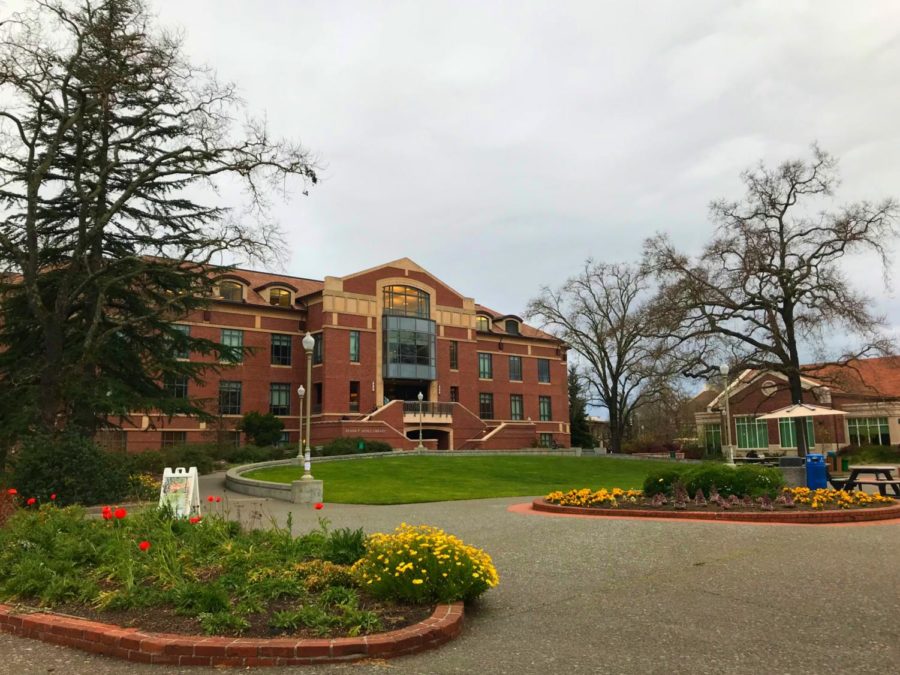Upward and onward, whether sticking to its roots or chopped like weeds, the valley oaks will form many more rings and take on many new forms. The evergreen backdrop of the campus branches out onto plush, green scenes providing a canopy of shade for re-energizing Bear Cubs.
As Santa Rosa Junior College turns 100, many valley oak trees on campus also earned their hundredth ring.
Tracing back to 1918 and earlier, the roots of the old oak trees and native plants covered 99 acres of rich valley land.
The area inspired world-renowned horticulturist, Luther Burbank, serving as a favorable ground for many botanical experiments. The green environment continues to yield admirers.
In 1930 the Chamber of Commerce donated Burbank Park to the Santa Rosa Board of Trustees. Half the agreement mandated keeping the natural setting of the memorial park intact. Today, Burbank Park still remains as the lawn that spans SRJC’s front entrance.
In 1984-1985, a “heritage tree protection zone” began for the 150 Valley Oak, Quercus Lobata trees, of over 250-years-old.
In 1993, an oak tree was sacrificed to make way for the Frank P. Doyle Library. Segments of the tree are displayed on each library floor. The art piece titled,“Wood Sculpture” was made by local sculptor Bruce Johnson.
In July 1996, more than 1,400 trees consisting of 400 different species were planted.
SRJC’s green landscaping was aesthetically pleasing enough to be featured in the 1996 movie, “Phenomenon.”
Older oaks get weaker with age and are more prone to falling in harsh conditions. In November 2013, a 250-year-old tree in the “heritage tree protection zone,” behind the main SRJC sign in Burbank Park, fell during a windstorm.
In April 2014, three more trees near the graduation platform, more than 100 years old, were removed due to potential hazards.
One-to-two trees that present a hazard are cut down annually, predominantly due to weakening with age or fungal disease.
The trunks of felled trees are donated or recycled throughout the district or campus to take on new forms through sculptures, mulch, benches and tables scattered amongst campus grounds.
In 2017, SRJC was recognized as “Tree Campus USA” by Arbor Day Foundation.
In 2018, a 450-year-old tree behind Bailey Field was felled due to age.
The campus groves serve as art pieces to bark at and benches for limbs to rest upon now and for future students.





Leslie Dalton • Aug 31, 2018 at 7:38 am
Great story! Thank you, Jennifer! This is my first year here and I was just admiring the beauty of the SRJC grounds yesterday, looking at the magnificent trees. Also, loving the shade they provide!! Also, I spotted a young peppercorn tree while strolling to class. I really like knowing the history of any new place I visit, especially those that have been around as long as SRJC. Thanks again, Leslie Dalton